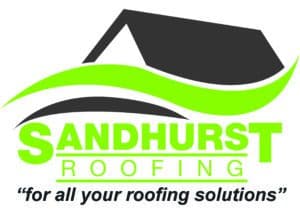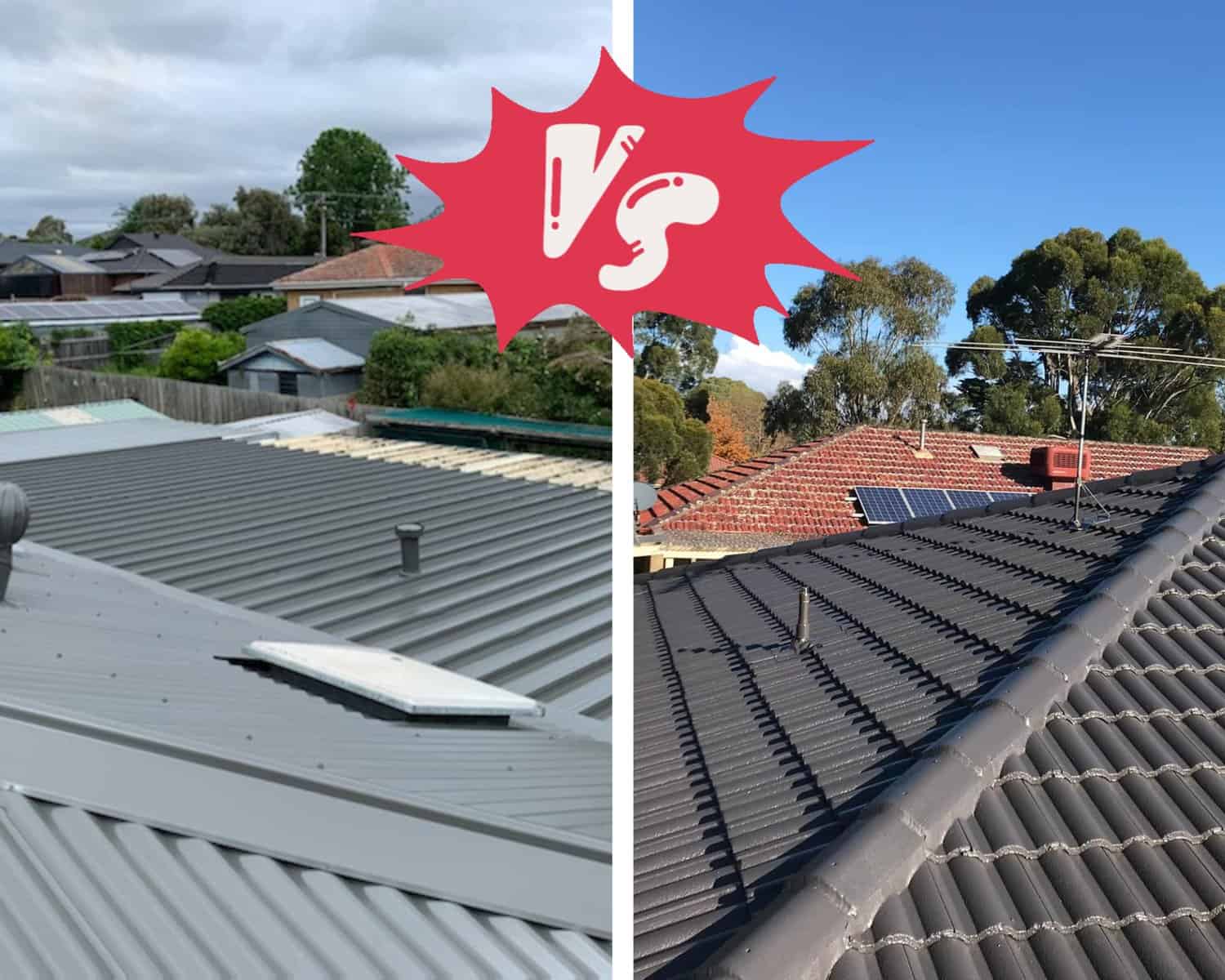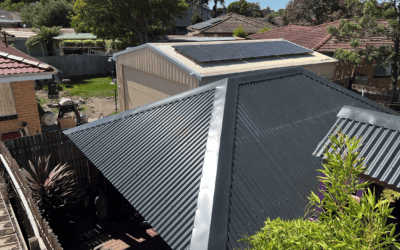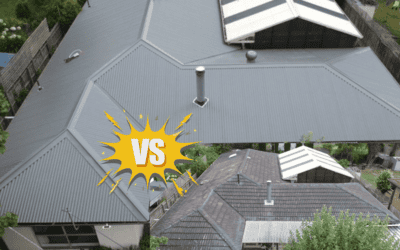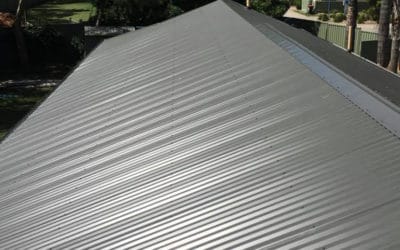Choosing the right roofing material for your home is one of the most critical decisions you’ll make as a homeowner. Not only does your roof protect your home from harsh weather conditions, but it also plays a significant role in your property’s overall aesthetic and value. Regarding popular roofing options in Australia, the debate between COLORBOND® steel and tile roofing is hot.
Both options offer unique benefits, but which is best for your home? This blog post compares these two popular choices across key factors like durability, cost, aesthetics, and environmental impact to help you make an informed decision.
What is COLORBOND® steel Roofing?
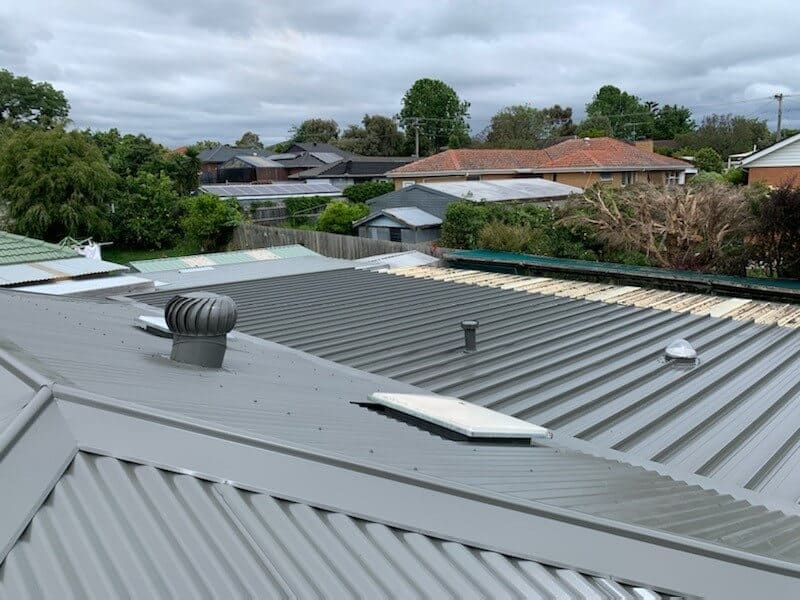
An Overview of COLORBOND® steel
COLORBOND® steel is a modern, durable, lightweight metal roofing material made from high-quality steel. First introduced in Australia over 50 years ago, COLORBOND® steel has become a favourite of many homeowners due to its sleek design, long-lasting performance, and resistance to harsh Australian weather conditions.
Key Features of COLORBOND® steel Roofing
- Durability: COLORBOND® steel is designed to withstand extreme weather conditions, including heavy rain, hail, and scorching sun. It’s also resistant to rust and corrosion, making it an excellent choice for coastal areas.
- Low Maintenance: Unlike traditional materials, COLORBOND® steel requires minimal upkeep. An occasional hose-down is enough to keep it looking fresh.
- Energy Efficiency: Thanks to its thermal efficiency, COLORBOND® steel roofs reflect more heat, helping to keep your home cooler during hot Australian summers.
- Design Versatility: Available in various colours and finishes, COLORBOND® steel roofs complement modern and minimalist architectural styles while providing a contemporary edge to any structure.
COLORBOND® steel lightweight material and easy installation process make it a convenient choice for many Australian homes.
What is Tile Roofing?
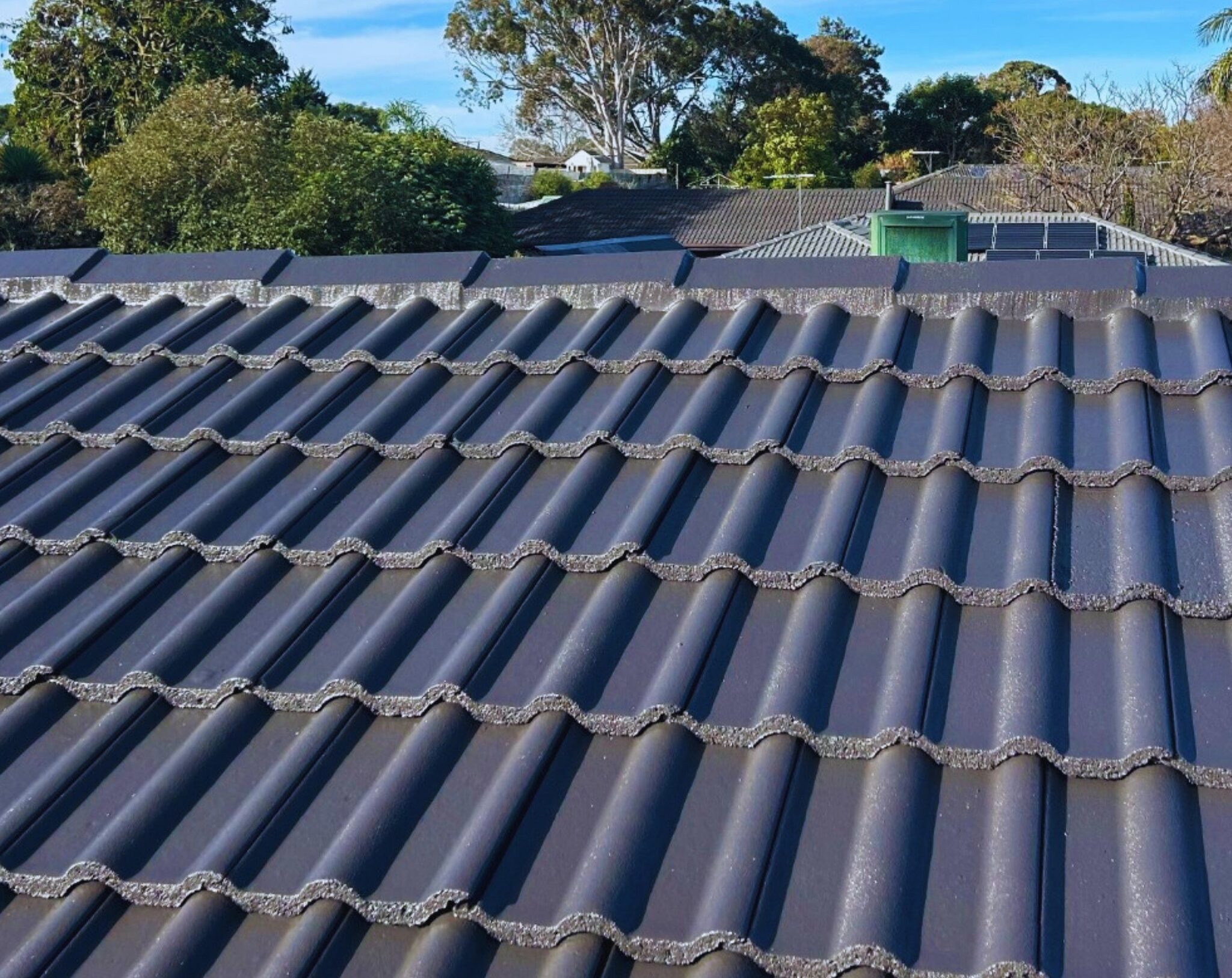
An Overview of Tile Roofing
Tile roofing has been a traditional choice for centuries and remains popular today. Typically made from terracotta or concrete, roof tiles are known for their timeless charm, durability, and exceptional insulation properties.
Key Features of Tile Roofing
- Classic Aesthetic: Roof tiles offer a traditional and elegant appearance that pairs beautifully with older homes or homes with a vintage or Mediterranean style.
- Longevity: Tile roofing materials, particularly terracotta tiles, are known to last for decades—often outliving their counterparts significantly.
- Robust Insulation: Tiles help maintain indoor temperatures by providing natural insulation, keeping your home cooler in summer and warmer in winter.
- Resistance to Weather: Tiles can endure harsh environmental impacts like heavy winds and hail, and they’re particularly suited to coastal areas as they’re highly resistant to salt erosion.
Despite their solid advantages, it’s worth noting that tile roofs are heavier and may require a more robust roof structure during installation.
Comparing COLORBOND® steel and Tile Roofing
Both COLORBOND® steel and tile roofing have their strengths. We’ve compared them across multiple factors to help you decide which might be better for your home.
1. Aesthetics and Style
-
COLORBOND® steel: Sleek, clean, and modern, COLORBOND® steel roofs are perfect for contemporary-style homes. With over 20 colour options, you can easily find a shade that complements your design vision.
- Tile Roofing: Elegant tiles work beautifully with both traditional and modern homes. They’re also available in various colors and profiles, offering versatility.
2. Durability and Weather Resistance
-
COLORBOND® steel: Explicitly engineered for harsh Australian conditions, COLORBOND® steel is rust-resistant, weatherproof, and capable of withstanding heavy hail. Its metal coating protects against leaks and external damage.
- Tile Roofing: While highly durable, tiles may crack under heavy impact. Concrete tiles, in particular, are less resistant to severe hail than COLORBOND® steel, while terracotta tiles offer excellent resistance to salt and weather erosion.
3. Installation and Maintenance
-
COLORBOND® steel: Faster and easier to install due to its lightweight material. Maintenance is minimal, requiring only occasional cleaning to maintain its appearance.
- Tile Roofing: Heavier tiles take longer to install and may require a more substantial roof structure. Cracked or broken tiles also need to be replaced periodically to maintain weatherproofing.
4. Cost and Value
-
COLORBOND® steel: Generally more cost-effective to install due to reduced labor and structural requirements. However, premium COLORBOND® steel options may have a higher initial cost.
- Tile Roofing: Typically more expensive to install, but it can increase your home’s long-term value due to its impressive lifespan and timeless aesthetic.
5. Environmental Impact
-
COLORBOND® steel: Made from recyclable materials and offers an eco-friendly manufacturing process. Its lightweight design also reduces transportation emissions.
- Tile Roofing: Natural and durable, but concrete tiles tend to have a heavier carbon footprint during production and transportation compared to metal alternatives.
A Quick Comparison Table
| Factor |
COLORBOND® steel Roofing |
Tile Roofing |
| Appearance | Modern, sleek, versatile | Traditional, timeless |
| Durability | Rust-resistant, hail-proof | Excellent weather resistance, cracks under impact |
| Maintenance | Minimal maintenance | It may require the replacement of broken tiles |
| Lifespan | 50+ years | Often more than 50 years |
| Cost | Lower upfront cost, long-term value | Higher upfront cost adds property value |
| Eco-Friendliness | Recyclable, lightweight material | Heavier carbon footprint |
Which One Is Right for You?
The choice between COLORBOND® steel roofing and tile roofing ultimately depends on your specific needs, the style of your home, and budget considerations.
Pick COLORBOND® steel if:
- You want a lightweight, rust-resistant material.
- You prefer a minimalist, modern design.
- You’re looking for a quick installation with minimal maintenance.
Choose Tile Roofing if:
- Your home suits a traditional or Mediterranean style.
- You prioritize thermal insulation and a long-lasting solution.
- You want a roof that can add significant value to your property.
Expert Recommendations for Your Roof
Consulting with roofing professionals is essential to make the right decision based on your home’s unique requirements. Sandhurst Roofing has over 30 years of experience helping Melbourne homeowners choose between COLORBOND® steel and tile roofing, and we are here to assist you every step of the way.
Whether you’re looking for an eco-friendly option, enhanced curb appeal, or superior weather resistance, our team provides expert advice, professional installation, and top-quality service.
Need Help Deciding? Contact Sandhurst Roofing Today!
Still unsure which roofing type is best for your home? Get in touch with the experts at Sandhurst Roofing for a tailored consultation. We’ll help you weigh your options and provide a competitive quote for your project.
Call Steve on 0448 812 800 or fill out our contact form here. With Sandhurst Roofing, your perfect roof is just a call away.
